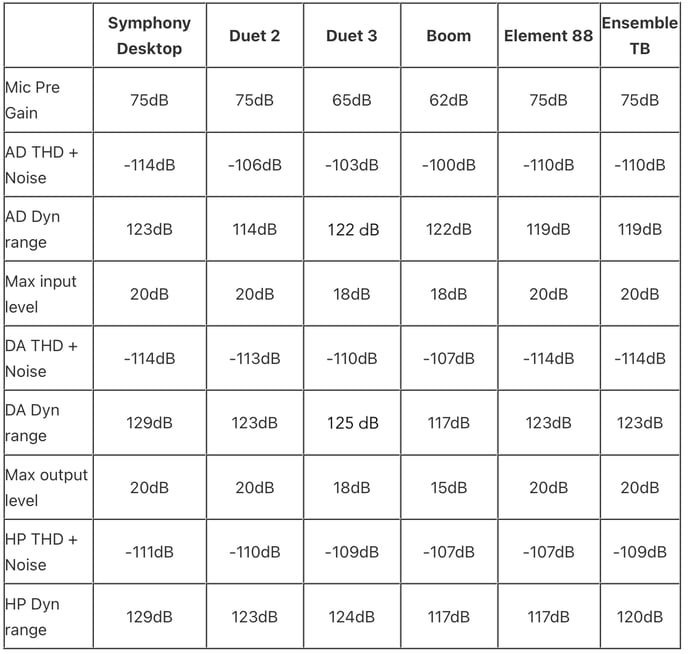How does Duet 3 compare to other Apogee units?
Here is a handy comparison chart for Duet 3 versus other Apogee devices.

- 65dB of gain covers most Mic Pre requirements. Many classic Mic Pre's have 60dB. Competitive interfaces in the market have 65dB Mic Pre gain.
- We traded off better dynamic range which is audible for a slight increase in THD which is inaudible. As a point of reference, THD of -103dB on the Duet 3 is 0.0007% and -106dB of the Duet 2 0.0005%. It would need to be around 1000 times higher to be in the audible range.
- Dynamic range of Duet 3's A/D is 5dB better than Duet 2 allowing you to capture more detail in your recordings. Duet 3's dynamic range is about equal to our more expensive Ensemble interface. The Duet 3's output dynamic range is a little more than both Duet 2 and Ensemble.
- Although the Duet 2 and Duet 3 headphone amp specs are similar, it doesn't tell the whole story. Duet 3 has our renowned zero ohm headphone output design which allows Duet 3 to drive the most power hungry headphones with excellent sound quality and high levels.